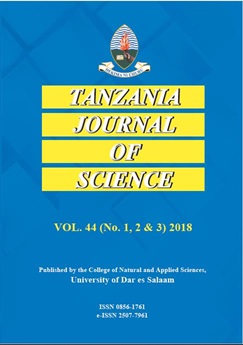Assessment of the Essential and Toxic Elements in Complementary Foods for Under Five Children in Tanzania Using EDXRF Spectroscopy
Abstract
In this study, the commonly used complementary foods (Unga wa Lishe) for children 0-5 years in Tanzania were analyze for essential and toxic elements in order to assess their nutritional levels. 60 samples were purchased from shops in Dar es Salaam, Moshi and Arusha regions and analyzed using Energy Dispersive X-Ray Fluorescence Spectroscopy (EDXRF). The concentrations of the essential elements were referenced to the Recommended Nutrient Intake (RNI) values for 6-12 months old children while the levels of toxic elements were compared to the Maximum Tolerable Limits (MTL) set by WHO 2004. The nutrient intake for Fe, Zn, Cu and Ca obtained in the complementary foods were less than the RNI values of 11.6 mg/day, 8.3 mg/day, 0.56 mg/day and 500 mg/day respectively set by Joint FAO/WHO and Codex. On the other hand, the concentrations of the toxic elements Ni and As were higher than the MTL (0.2 µg/g and 11 µg/g, respectively) for these elements recommended by EC and WHO 2004, respectively. Further analysis of the complementary foods in Tanzanian is needed to produce more data which will be a guide for the appropriate measures to reduce mineral malnutrition in Tanzania.
Keywords: Tanzania, complementary foods, children under five, mineral malnutrition, toxic elements


